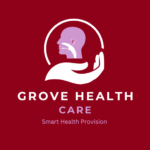Sudden sensorineural hearing loss
Sudden sensorineural hearing loss (SSNHL) is a sudden, unexplained loss of hearing in one or both ears, typically occurring within a 72-hour period.
Epidemiology
1. Incidence: SSNHL affects approximately 5-20 per 100,000 people per year.
2. Age: SSNHL can occur at any age, but it's most common between 40-60 years old.
3. Sex: Both males and females are equally affected.
Pathophysiology
The exact cause of SSNHL is often unknown, but possible mechanisms include:
1. Viral infections: Viral infections, such as herpes simplex or influenza, may trigger SSNHL.
2. Vascular disorders: Reduced blood flow to the inner ear or cochlea may contribute to SSNHL.
3. Immune system disorders: Autoimmune diseases, such as rheumatoid arthritis or lupus, may increase the risk of SSNHL.
4. Trauma: Head trauma or barotrauma (e.g., scuba diving) may cause SSNHL.
Symptoms and signs
1. Sudden hearing loss: Hearing loss in one or both ears, often accompanied by a feeling of fullness or pressure.
2. Tinnitus: Ringing, buzzing, or other sounds in the affected ear(s).
3. Vertigo: Dizziness or balance problems.
4. Ear fullness: Feeling of fullness or pressure in the affected ear(s).
Investigations
1. Pure-tone audiometry: Measures hearing thresholds to assess the extent of hearing loss.
2. Speech audiometry: Evaluates speech recognition and comprehension.
3. Otoacoustic emissions (OAEs): Measures the inner ear's response to sound.
4. Imaging studies: CT or MRI scans to rule out other conditions, such as acoustic neuroma or stroke.
5. Blood tests: To identify potential underlying causes, such as autoimmune disorders or infections.
Management Approach
1. Prompt medical attention: Seek medical attention within 72 hours of symptom onset.
2. Corticosteroids: Oral or intratympanic (through the eardrum) corticosteroids to reduce inflammation.
3. Antiviral medications: In cases where a viral infection is suspected.
4. Hyperbaric oxygen therapy: To improve blood flow and oxygenation to the inner ear.
5. Cochlear implants: In cases where hearing loss is severe and permanent.
6. Rehabilitation: Auditory rehabilitation, including hearing aids, speech therapy, and counseling.
Prognosis
-
Spontaneous recovery
Approximately 50% of patients experience spontaneous recovery within 2-3 weeks.
-
Treatment outcomes
Prompt treatment can improve outcomes, but the effectiveness of treatment varies depending on the underlying cause and severity of hearing loss.
Share Post On:
Recent Posts
-
Nuggets of ORL-RHINOLOGY
-
Nuggets of Otorhinolaryngology-Basic sciences
-
Anatomy of the Muscles of the Soft Palate
-
Ethmoidal Arteries Ligation for Epistaxis
-
Submucous Cleft Palate (SMCP)
-
Approach to Ligation of the External Carotid Artery
-
Approach to Managing a 3-Year-Old Boy with a Foreign Body in the nasal cavity.
-
Approach to Managing a 3-Year-Old Boy with a Foreign Body impacted in the ear canal.
-
Endoscopic Sphenopalatine Artery Ligation (ESPAL) for Epistaxis
-
Surgical Management of Epistaxis
-
Technique of Incision and Drainage of Septal Hematoma/Septal Abscess
-
Upper Aerodigestive Tract Foreign Body Impaction
-
Incision and Drainage of Hematoma Auris
-
Rigid Bronchoscopy for Retrieval of Foreign Bodies in Children
-
Foreign Body Impaction in the Larynx, Trachea, and Bronchi
-
Leadership Position is a Tool, not a Trophy
-
Carcinoma of the Oropharynx
-
Peritonsillar Abscess
-
Ethics of Doctor-Patient Relationship
-
Doctor-Patient Relationship Case Scenarios
-
Asymmetrical Tonsils and Approach to Evaluation and Management
-
Nasal Polyposis
-
Rigid Oesophagoscopy and Complication
-
Anatomy of Oesophagus
-
Stridor, Snoring, Stertor And Wheezing: How They Compare
Categories
Get in Touch
Read doctor-produced health and medical information written for you to make informed decisions about your health concerns.

